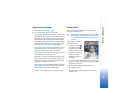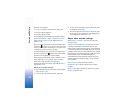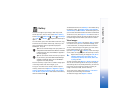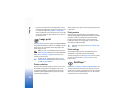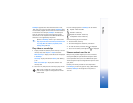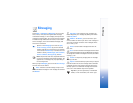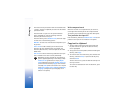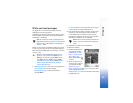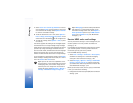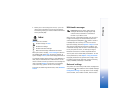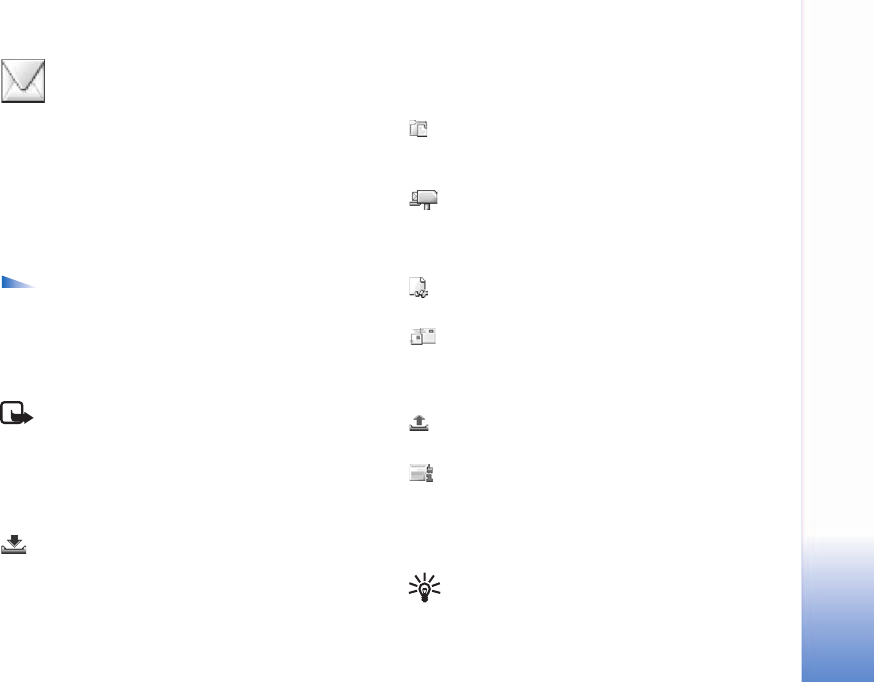
Messaging
41
Messaging
Select Menu > Messaging. In Messaging, you can create,
send, receive, view, edit, and organize text messages,
multimedia messages, e-mail messages, and special text
messages containing data. You can also receive messages
and data through a Bluetooth connection, receive Web
service messages, receive cell broadcast messages, and
send service commands.
Options in the Messaging main view are Open,
Create message, Connect (if you have defined
mailbox settings but a connection to the mailbox
is not active) or Disconnect (if a connection to the
mailbox is active), SIM messages, Cell broadcast,
Service command, Settings, Help, and Exit.
Note: Only devices that have compatible features
can receive and display multimedia messages. The
appearance of a message may vary depending on
the receiving device.
When you open Messaging, you can see the New message
function and a list of folders:
Inbox—Contains received messages except e-mail
and cell broadcast messages. E-mail messages are stored in
the Mailbox.
My folders—For organizing your messages into
folders. Organize your messages by adding new folders
under My folders.
Mailbox—In Mailbox, you can connect to your
remote mailbox to retrieve your new e-mail messages or
view your previously retrieved e-mail messages offline.
See "E-mail," p. 53.
Drafts—Contains draft messages that have not
been sent.
Sent—Contains the last 20 messages that have been
sent, excluding messages sent using a Bluetooth connection.
To change the number of messages to be saved, see "Other
settings," p. 56.
Outbox—A temporary storage place for messages
waiting to be sent.
Reports—Contains delivery reports that you request
from the network of the text messages and multimedia
messages you have sent (network service). Receiving a
delivery report of a multimedia message that has been
sent to an e-mail address might not be possible.
Tip! When you have opened any of the default
folders, to view the folders, scroll left or right.



